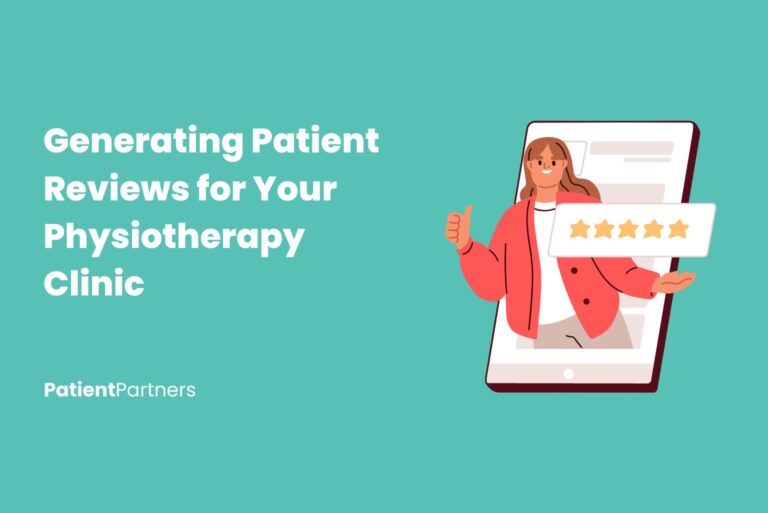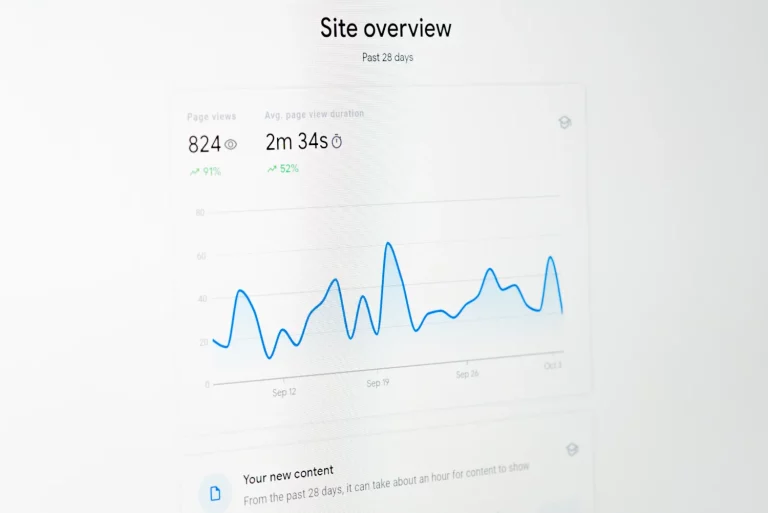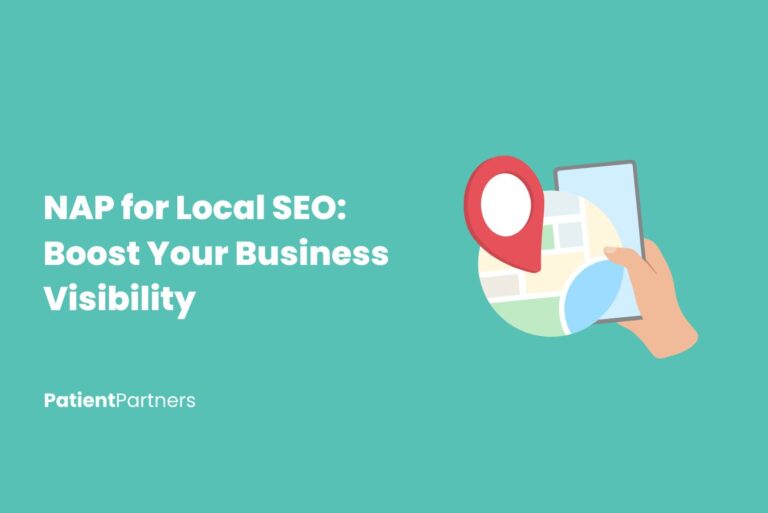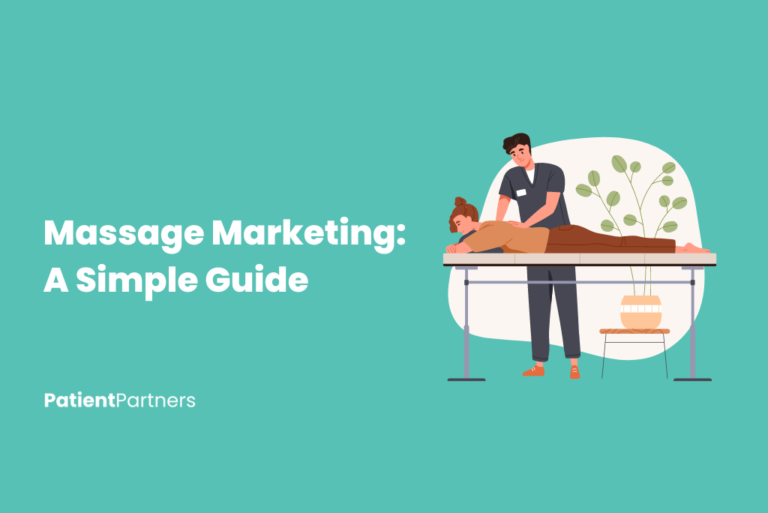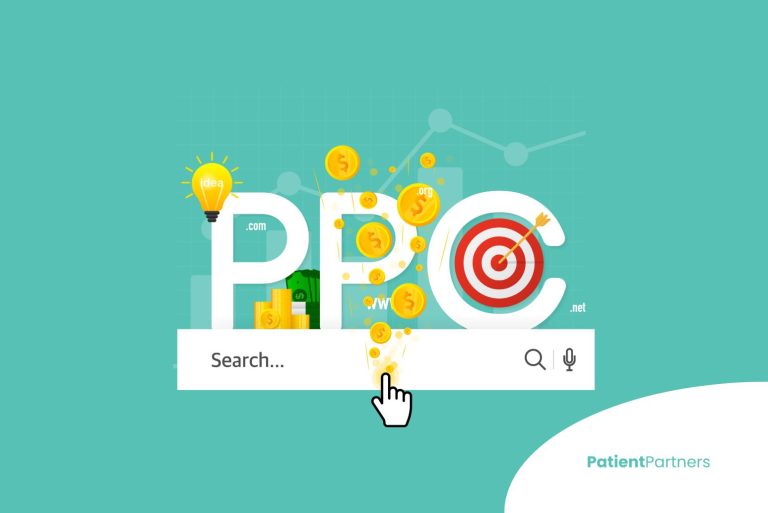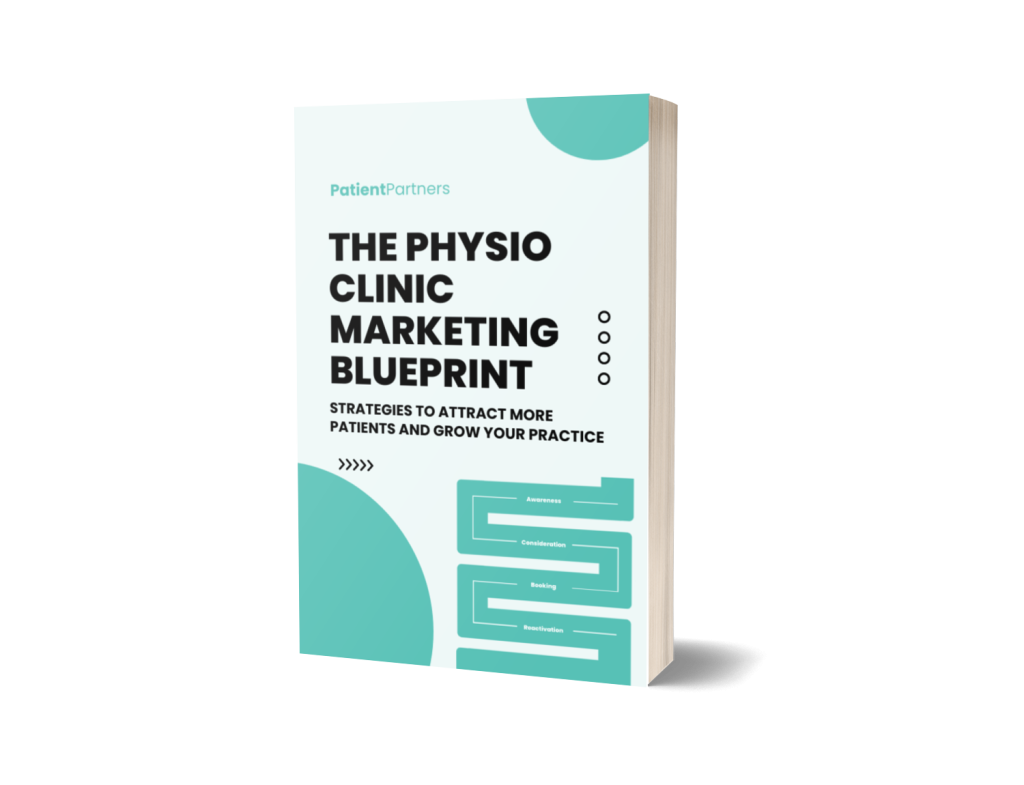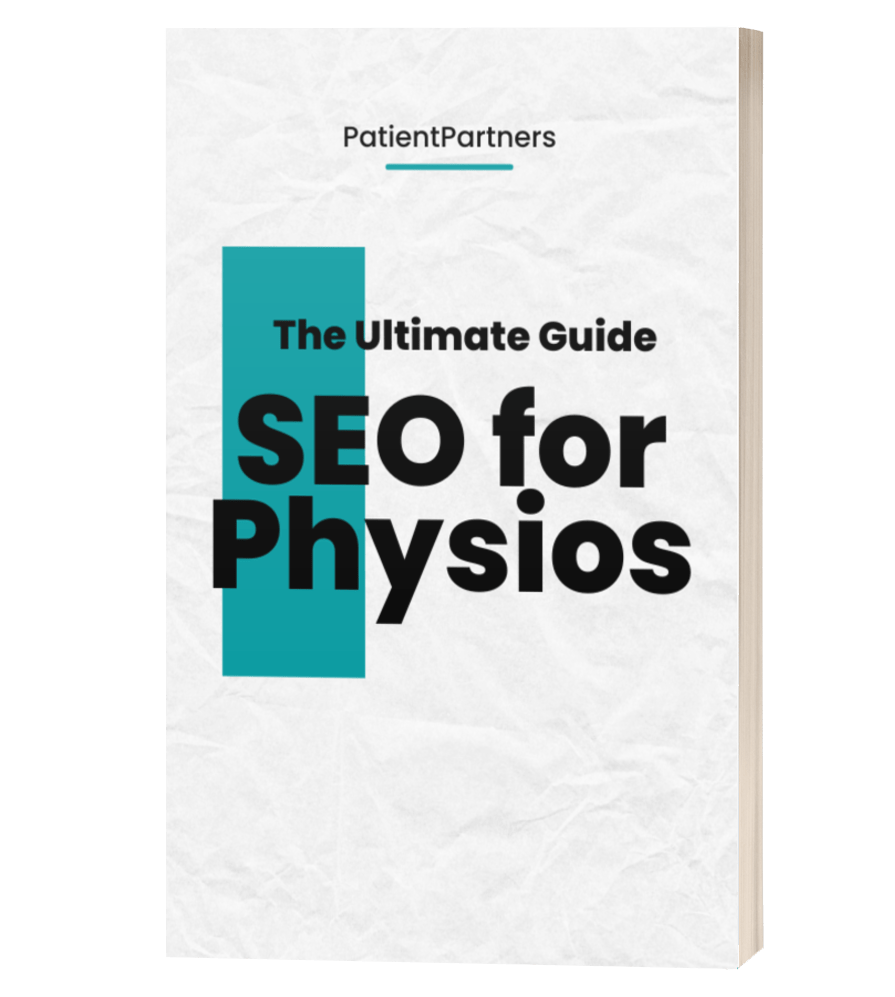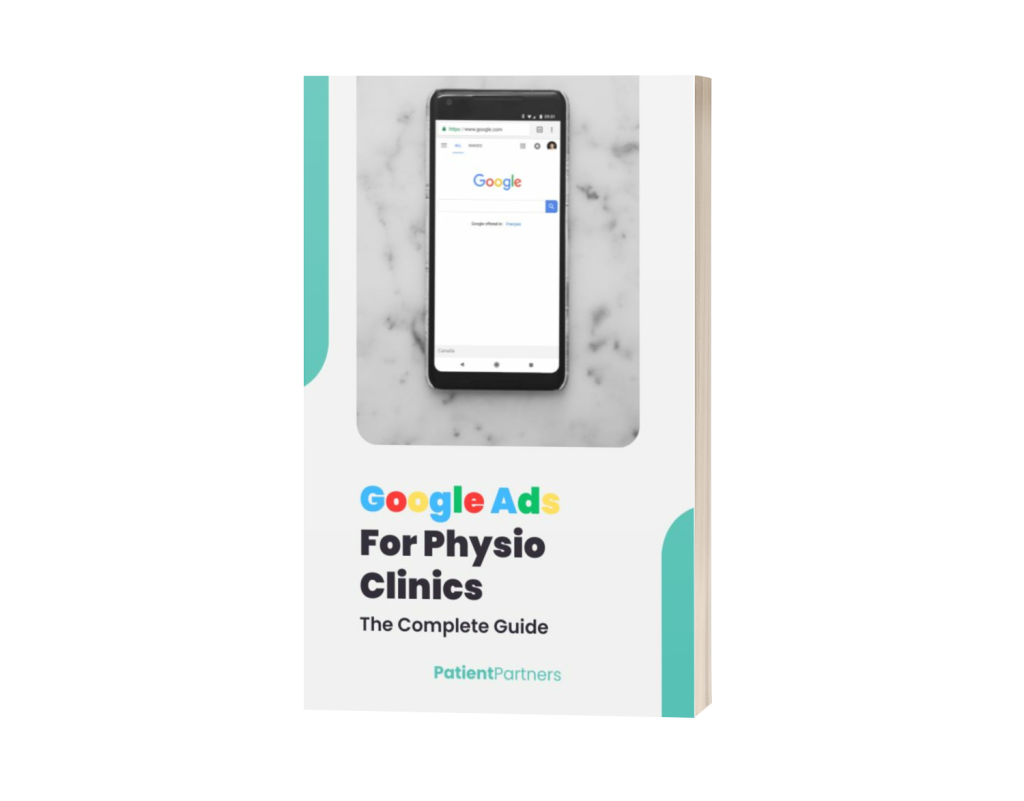If you’re a physiotherapy clinic owner, you’ve probably heard the term “SEO” before. But you may not understand what the hell SEO actually is.
That’s what we’re here to fix.
With so many competitors vying for attention online, having a well-rounded SEO strategy can help your clinic stand out from the crowd. In this article, we will provide you with an up-to-date guide on how best to optimize your website through SEO in 2025.
What is SEO?
SEO stands for “search engine optimization; in short, it’s all about improving your rank on Google.
When someone searches for “physiotherapist near me” – does your clinic come up?
How about when they search for “back pain physio” or “physiotherapy + [your location]”?
If not, then you need to invest in SEO
Before you keep reading… we’re offering free SEO audits for physiotherapy clinics. Try it out.
Why is SEO Important for Physio Clinics
People are searching for your services, but if your website doesn’t show up on the first page of Google, then you have little chance of turning them into patients.
Being on the first page of Google and Bing is important because the vast majority of people don’t scroll past the first few listings.
For clinics that are doing well at SEO, it can easily become their biggest and most important channel for new business.
Get a free website and SEO audit

How Do Physio Clinics Actually Do SEO?
SEO is a complicated topic – there’s an entire industry dedicated solely to helping websites rank better. But that doesn’t mean it’s out of reach for clinic owners.
There are a few key steps that every clinic should follow when looking to improve their search engine optimization.
1. Create a Google My Business Listing
The first thing to take care of is your Google My Business listing.
Google is by far the biggest search engine, so if you’re going to start anything, then start here.
Make sure to:
- Give your full business name
- Spell your address and phone number the exact same as it’s on your website
- Provide a detailed description of your company
- Add a logo and photos
- Add the relevant categories (such as “physiotherapy”, “massage therapy”, “athletic therapy”, etc.)
- Add your hours and any other information
Once you have a complete and optimized GMB profile, you’ll put yourself in the best position to rank for relevant searches.
Here’s an example of a complete GMB listing for you to reference.
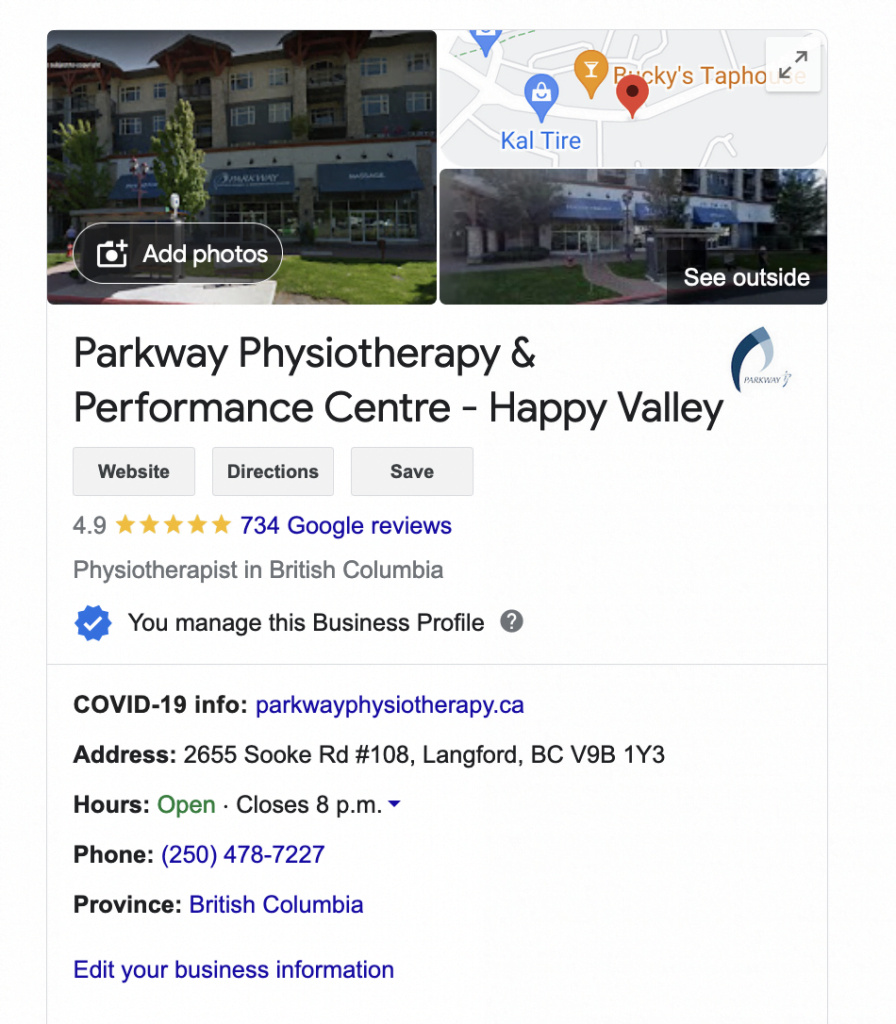
2. Do Your Keyword Research
Keyword research is all about finding search terms that you can create content for in order to rank.
There are endless opportunities with keyword research, but here’s what you should start looking for:
- service + location (ex. “physiotherapy victoria bc”)
- keywords related to services
- keywords related to pain conditions
While it’s easy to make assumptions about keywords, I highly recommend doing your own research. You may be surprised by the most popular search terms and trends.
Once you understand which keywords you’re trying to rank for, it’s time to update your key pages.
One tool I like for keyword research is SEMRush. It can help with you uncover keyword opportunities and even has a free plan that provides you with limited but useful data.
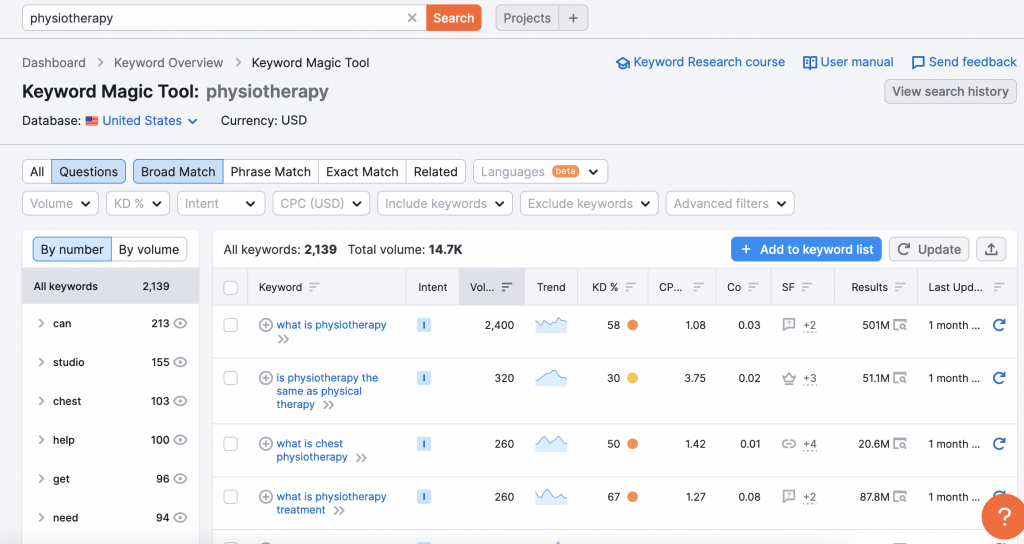
3. Create and Optimize Key Pages
Armed with your list of keywords, look at updating your website or at least updating your key pages.
Your key pages are things like your home page, services page, and individual service pages.
But be strategic about which keywords you’re using and where.
For example, it’s no use to have multiple pages trying to rank for the same keyword. If you try, then you’re just competing with yourself.
Get the 100+ Point Marketing Checklist for Clinics
It’s packed with tips and strategies you can use to grow your clinic today.
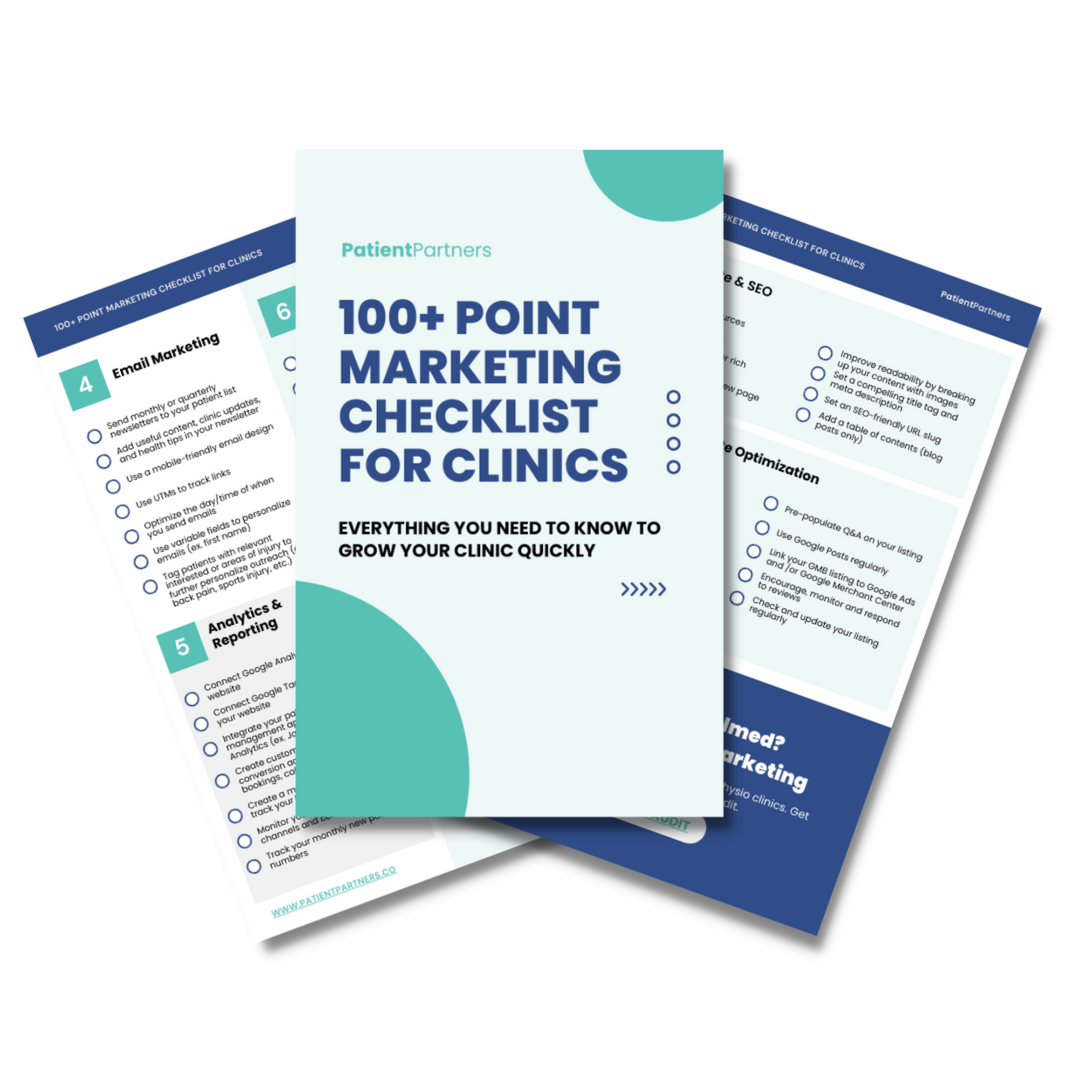
4. Create Relevant Content
In addition to creating these key pages, look at other types of content you can create.
Blogs are a great tool for this.
Look at answering the questions that came up through your keyword research.
5. Take Advantage of Local Directories
Some people snub their nose at local and online directories, but the reality is that they still provide a benefit to your website.
There are a couple of reasons for this.
First of all, they provide you with free traffic. It may be a nominal amount of website visitors, but something is better than nothing.
Second, many provide you with a backlink. Some of these are called “no follow” backlinks which limits their SEO benefit, but it’s still useful nonetheless.
Third, they help you dominate branded search. When people search for your business, the last thing you want is a competitor coming up. By having these business directory listings, you can help to push down any other irrelevant links.
Yelp is an example of one of the biggest local directories. Have you claimed your listing? Are you listed at all? Notice how one of the clinics listed here has a 1-star rating… have you responded to your reviews?
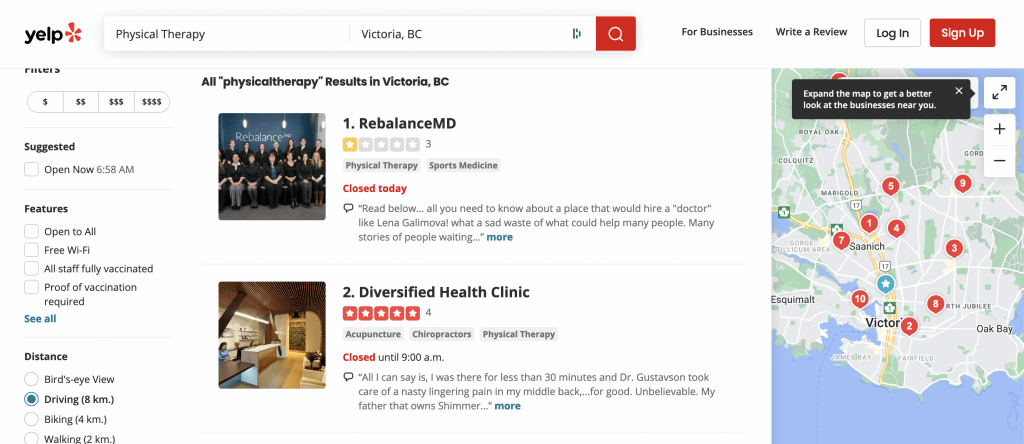
4 Tips for Improving Your Website SEO
Knowing why SEO matters and having a basic understanding is a great start. But ranking on Google is competitive so there’s still a lot more work to be done.
Content optimization involves using keywords in titles, descriptions and headings to make it easier for search engines to identify the relevance of your content. Additionally, optimizing your website’s content with internal links and external links can help to increase traffic from other pages on the web, which will ultimately lead to more conversions.
When crafting content, you should focus on writing compelling and engaging copy that will help you connect with potential patients and drive more traffic to your website.
Additionally, you should ensure that all of your website pages are rich in relevant keywords so that they can be easily found by searchers online.
Tip #1: Build quality backlinks to promote your physiotherapy clinic
Link building is an essential part of SEO for physiotherapy clinics in 2025. When it comes to link building, there are various strategies that can be used to boost your rankings and drive more traffic to your website.
The most effective and sustainable link building strategy is to create high-quality content that is valuable to your target audience. This will help you attract natural links from other websites in the form of backlinks, which are a key indicator of quality content according to search engines.
Additionally, you should be actively reaching out to other sites and bloggers in your niche, offering them interesting content that may be useful for their audiences in exchange for a backlink. This will help you diversify the types of backlinks pointing at your site, making it more appealing both to search engine crawlers as well as potential new patients.
You should also consider implementing guest posting opportunities into your link building strategy. Guest posts on popular websites with relevant topics can be an effective way of promoting your clinic’s services and generating additional leads.
Overall, link building is an essential part of SEO for physiotherapy clinics in 2025 and should not be overlooked when creating a comprehensive SEO strategy for your clinic or practice. With the right approach, it can help you gain higher rankings on search engine results pages (SERPs) as well as generate more leads from organic traffic sources
Tip #2: Optimize content for local searches
Local SEO Optimization in 2025 is an essential component for any physiotherapy clinic looking to increase its visibility online.
Local SEO involves optimizing your website for searches that are specific to a particular location, such as city, state, or country. When people search for local services related to physiotherapy, they are more likely to visit the websites of those clinics that are located close to them.
To ensure your clinic is visible in local searches, you should start by optimizing your website’s content with the right keywords and phrases. This means incorporating terms that include the location of your clinic into titles, descriptions, and headings so that search engines can easily identify it as relevant content. Additionally, you should also link to other local businesses or websites in order to further demonstrate the relevancy of your content when it comes to local searches.
In addition to keyword optimization, you should also create content specifically tailored for a local audience. This can include writing about local events or news related to physiotherapy, featuring local doctors or staff members in blog posts or videos, and engaging with other local businesses on social media platforms. All of these tactics will help you connect with potential patients and strengthen your presence in local search results pages (SERPs).
You should also make sure that all of your contact information including address, phone number and email address is visible on every page of your website as this is how Google can determine whether or not a business is eligible for listing in its mapping service. Additionally, if you utilize Google My Business (GMB) and have claimed it for your practice then it’s important that all information listed there is accurate and up-to-date as this will increase the chances of showing up higher on SERPs when someone performs a localized search query.
Finally, having quality reviews from existing patients on popular sites such as Yelp or TripAdvisor can help boost your visibility locally since these review sites often rank highly in SERPs when people search for services nearby. You can encourage reviews from existing patients by sending out emails after each appointment asking them to leave feedback online – this will not only help grow visibility but also add credibility and trustworthiness which are essential factors when it comes to attracting new customers locally as well as globally.
Tip #3: Identify opportunities by analyzing the SEO strategies of your competition
Finally, conducting a competitor analysis to identify opportunities by analyzing the SEO strategies of your competitors is an essential part of staying ahead in 2025.
Tip #4: Speed Up Your Website
Making your website faster is not only a better experience for visitors, but it actually helps you rank higher on Google.
Speeding up your website includes things like optimizing images, but it also includes technical improvements such as minifying code, caching pages and assets, and serving fonts correctly.
5 SEO Tools to Help Rank Your Physio Clinic
Getting your clinic website to rank is complicated.
Fortunately, there are a ton of tools out there that can help you find relevant keywords, uncover opportunities for optimization, and analyze your traffic.
Here are 5 key tools you can use to help improve the local SEO for your physio practice.
1. Google Analytics
Google Analytics is a powerful free tool that allows you to measure and analyze all your website visitors.
One of the best aspects of Google Analytics is that you can compare the performance of different marketing channels and campaigns.
For example, maybe you recently ran an ad on a local business website or are wondering how much traffic you get from Google.
Want a free website & marketing audit?
We’ll tell you what parts of your website and marketing are working – and what parts aren’t.

2. SEMRush
Keyword research is all about understanding what search terms to target.
With keyword research, the goal is to find keywords that are relevant, have a good search volume, and aren’t overly competitive.
SEMRush is one of the lead keyword research tools out there and a personal favorite of mine.
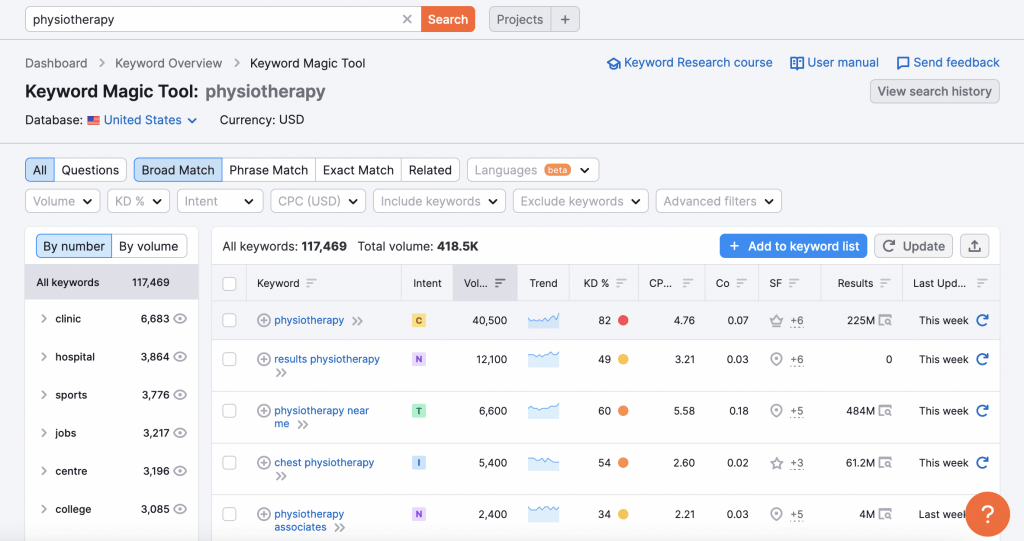
There are also a handful of other keyword research tools that you can use to find keyword ideas and uncover opportunities.
AnswerThePublic is a free tool that helps you find different questions people are searching related to a given keyword. For example, if we look up “shoulder pain”, we see results like “what is shoulder pain that radiates down the arm”.

3. Page Speed Insights
Page speed matters for two major reasons:
- It impacts the user experience and your conversion rate
- It impacts your SEO
Page Speed Insights is a tool created by Google that can assess your page speed and provide recommendations for improvement.
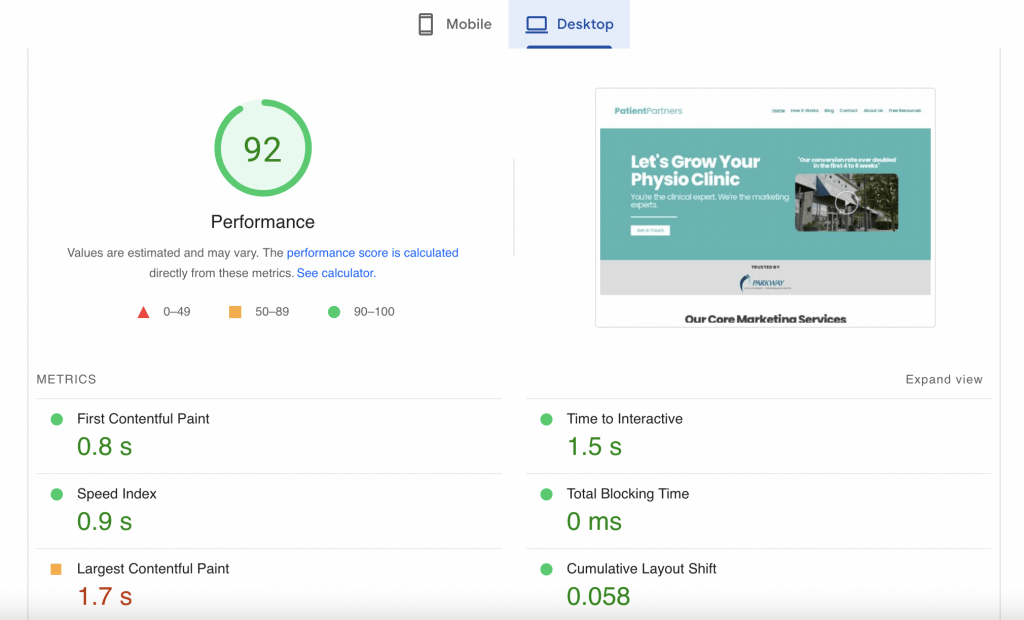
As you dig into the recommendations, you’ll notice that many of them are fairly technical in nature.

So you may need the help of your web developer or to work with a marketing expert.
4. Google Search Console
Google Search Console is arguably the most important tool in your SEO tool belt.
Setting up Search Console is fairly simple, even if it seems complicated.
The best way to verify your domain is to add a “txt” file to your DNS setting.
5. Screaming Frog
Screaming Frog is the most technical tool in the list.
Essentially, Screaming Frog crawls your website to capture all of your page titles & content, meta data, internal and external linking, and more.
So what can you do with all of this information?
- Quickly and easily find broken links
- Find pages without H1 headings
- Find pages with duplicate H1 headings
- Find which pages you’re linking to
- Visualize your link structure
The list could go on, but the main point here is that Screaming Frog helps you optimize your technical SEO and linking.
Nothing Beats Free Traffic
If you need any last push to get started with SEO, then just think about this…
Paid ads are great, but nothing beats free, relevant traffic.
Investing some time in SEO will help you capture more of that sweet sweet free traffic.
The PatientPartners Process
At PatientPartners, we have a proven method for getting physical therapy clinics to rank.
SEO isn’t an easy beast to tackle, so if you’re looking for an easier way, reach out to us.


